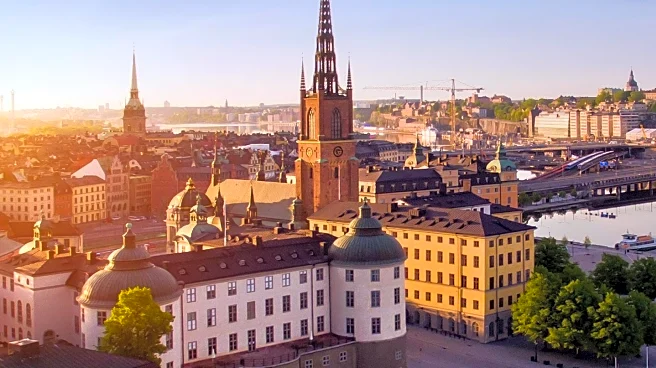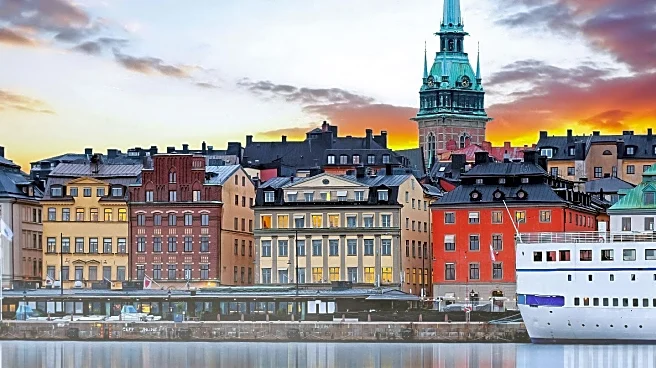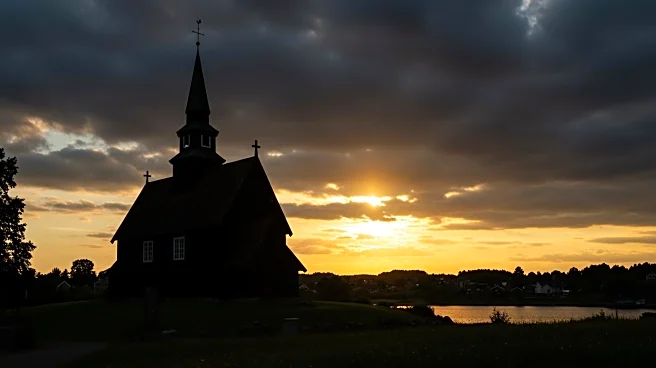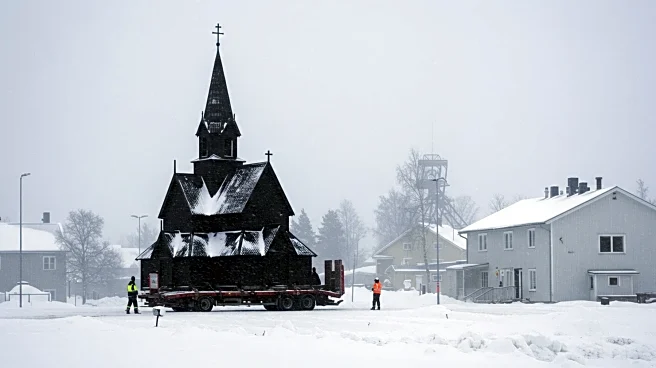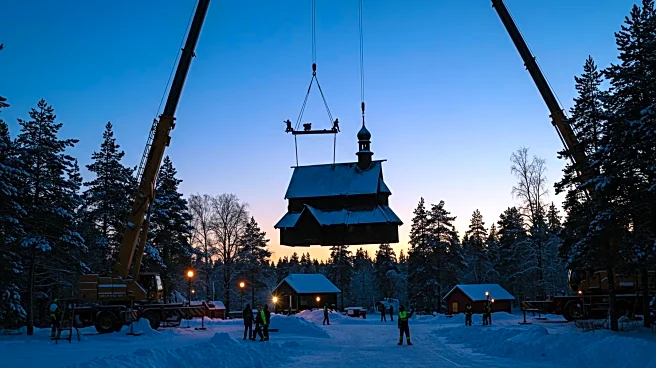Rapid Read • 8 min read
Kiruna Church in Sweden, a historic Lutheran church, is incorporating minority languages such as Northern Sami, Finnish, and Meänkieli into its worship services. This move reflects the church's inclusive ethos since its founding in 1912. The church recently relocated due to the threat posed by the world's largest underground iron-ore mine. The relocation was attended by Sweden's King Carl XVI Gustaf. The church's architecture and practices aim to welcome all community members, including Indigenous Sami people, by avoiding an overemphasis on Christianity and embracing cultural diversity.
AD
The inclusion of minority languages in Kiruna Church's services highlights efforts to preserve cultural heritage and promote inclusivity. This approach is significant in a region where Indigenous Sami people have historically faced suppression. By embracing minority languages, the church fosters a sense of belonging and respect for diverse cultural identities. The relocation of the church also underscores the impact of industrial activities on communities and the importance of preserving historical and cultural landmarks. These efforts contribute to broader discussions on cultural preservation and the role of religious institutions in promoting social cohesion.
The church's relocation and language inclusion may inspire other institutions to adopt similar practices, promoting cultural diversity and inclusivity. The Swedish government's truth commission is expected to address the lasting trauma of past policies on the Sami people, potentially leading to further reconciliation efforts. The church's relocation may also prompt discussions on balancing industrial development with cultural preservation. As the church settles into its new location, it will continue to serve as a spiritual and cultural hub for the community, fostering connections across diverse backgrounds.
The church's efforts to incorporate minority languages reflect broader societal shifts towards recognizing and valuing cultural diversity. This move challenges historical narratives of assimilation and suppression, promoting a more inclusive approach to community building. The relocation of the church due to mining activities raises questions about the environmental and social impacts of industrial development, highlighting the need for sustainable practices that respect cultural heritage. These developments may influence future policies on cultural preservation and community engagement.
AD
More Stories You Might Enjoy


